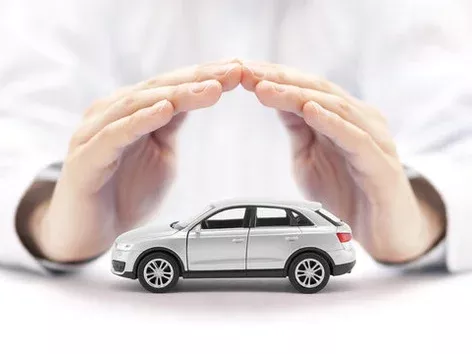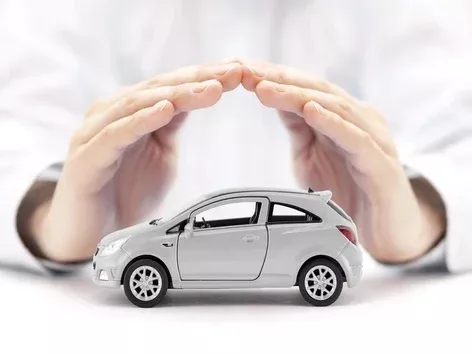Traveling abroad by car: basic rules for drivers when entering Europe

When travelling abroad by car, it is important to prepare in advance to avoid unpleasant situations at the border. In addition to the standard document requirements, there are other nuances to consider. Find out more about what documents you need to drive abroad and the main rules for drivers in Europe
Travelling abroad by car is not only an exciting way to see new places, but also an opportunity to enjoy comfort and freedom of movement. However, in order for your trip to be safe and smooth, you need to know what documents you need to leave. It is important to remember that travelling abroad by car has certain documentation and insurance requirements.
What documents you should prepare to avoid unforeseen situations during your trip, as well as the basic rules for drivers in Europe, are described below.
Do you need a Green Card?
Apply for a policy on the Visit Ukraine portal in just 5 minutes!
What documents are needed to travel abroad by car?
- A driving licence that meets international standards.
- A vehicle registration document (technical passport) containing personal information in Cyrillic and Latin alphabets.
- Identification mark of Ukraine on the car (UA).
- The state number plate on the car. If your car has an individual licence plate, it will be considered valid only on the territory of Ukraine. You have the right to cross the border only with state number plates.
- Valid international insurance contract Green Card (in accordance with Article 16 of the Law of Ukraine ‘On Compulsory Insurance of Civil Liability of Owners of Land Vehicles’).
Green Card for a car: what do you need to know in 2025?
A Green Card is a mandatory international motor third party liability insurance contract for vehicles travelling outside Ukraine. The policy is recognised in the countries participating in the international Green Card system, including all EU countries, as well as Switzerland, Norway, the United Kingdom, Turkey, Israel and others.
It is important to note that some of the terms and conditions of the Green Card policy were changed in early 2025:
- Policy format. Now, a PDF policy that can be displayed on a smartphone screen is sufficient. The contract comes into force the next day after it is issued. This means that you won't be able to take out insurance right at the border - you should take care of it in advance.
- Pricing. The fixed price has been cancelled - each insurance company sets the price independently. Therefore, it is worth comparing offers from several insurers before buying.
In order to travel abroad by car without any problems, it is important to take care of all the necessary documents, including international insurance - the Green Card. However, it's worth remembering that this policy has its own nuances, and it's important to prepare for a car trip in advance. If you do not want to waste time looking for insurance, the best solution is to apply for a Green Card online through the Visit Ukraine portal. It's convenient, fast and hassle-free. Moreover, thanks to a special calculator, you will be able to compare the options of insurance companies, which will allow you to choose the most favourable price and conditions for your trip.
What documents do I need to travel abroad by car if I am not the owner of the vehicle?
If you are not the owner of a car but intend to cross the border by it, you need to have one of the following documents with you
- a power of attorney for the right to drive the car with a note on the owner's permission to travel abroad;
- temporary registration certificate for the right to drive a car;
- technical passport for the car. As you know, the Diia app has a car sharing feature that allows you to share your car's registration certificate with another person in a few clicks. This is convenient when several family members (for example, husband and wife) use the car.
To learn what documents are required to drive abroad in someone else's car and how to obtain them, follow the link.
How do I transfer the registration certificate via Diia?
To share car documents through the app, you need to take a few steps:
1. In the ‘Services’ section, select the ‘Driver’ section and find ‘Car sharing’;.
2. Select the desired menu item: share a car or send a request for a technical passport to another person.
3. Select the car you want to share. 4. Indicate the period for which the technical passport from your car will be available in Actions for the other person.
5. Enter your contact details or check them if they have been automatically updated via BankID;
6. Indicate your place of residence.
7. Check the application and send a request for the data of the person with whom you want to share the data sheet.
8. Scan the QR code or send a link to the request to the person to whom the data sheet is being transferred (if they are not near you).
9. The user confirms the request, adds contact details and signs the application using the app;
10. Sign the application using Diia.Signature and send it to the MIA service centre.
In a few minutes, the technical passport will appear in the other person's app.
Please note! If the car owner is abroad, a power of attorney for a third party to drive the car can be issued at the Ukrainian embassy/consulate or a notary in the country of residence. Such a power of attorney must be apostilled, translated into Ukrainian and certified by a Ukrainian notary.
The presence of the person for whom the power of attorney is issued is not required.
Don't want to miss important updates and useful articles? Subscribe to our weekly newsletter!
In which EU countries do I need to change my tyres with the onset of cold weather?
Ukrainian drivers are used to an annual process: when the first cold weather sets in, they need to change their car into winter tyres. The law does not clearly define when drivers must change their tyres, nor does it have a system of fines for not having winter tyres.
The Cabinet of Ministers of Ukraine was supposed to develop and approve the relevant rules in 2022, but the war prevented it. Therefore, this winter, Ukrainian drivers are following the usual rules: as soon as the average temperature drops to 7 degrees, it is time to change winter tyres.
There is also no single law in Europe regarding the replacement of wheels. Each country regulates the rules independently, based on its geographical location and climate.
European countries where winter tyres are mandatory
In some European countries, there are clear legal requirements for all drivers to change to winter tyres.
● Northern Europe
- Finland. All vehicles must be fitted with 3PMSF, POR or studded tyres between 1 November and 31 March.
- Latvia, Estonia and Lithuania. M+S winter tyres for vehicles weighing less than 3.5 tonnes are mandatory from 1 December to 1 March in Latvia and Estonia, and from 1 November to 1 April in Lithuania.
- Norway, Sweden and Iceland. All vehicles weighing more than 3.5 tonnes must change to winter tyres between 15 November and 31 March in Norway, and between 1 November and 14 April in Sweden and Iceland.
● Western Europe
- Austria. Winter tyre driving in the country is restricted from 1 November to 15 April. Snow and ice-covered roads require snow chains and two drive axle tyres to be used. It is also noted that in case of non-compliance with these requirements, the driver faces a fine of EUR 60, and if he endangers other road users, the fine will be increased to EUR 5,000.
- Luxembourg. The installation of winter tyres is mandatory from 1 December to 31 March. At the same time, the speed of a vehicle on such tyres should not exceed 60 km/h in the city and 90 km/h on the motorway.
- France. In the mountainous regions of the country - in the Alps, Pyrenees, Vosges, Mount Jura and the Central Massif - all vehicles must use SPMSF tyres between 1 November and 31 March. Failure to comply with the law could result in a fine of €135.
● Central Europe
- Germany. When driving on ice, snow or sleet, all vehicles must be fitted with tyres marked M+S or with the mountain symbol with a snowflake. The law does not provide for exact dates for the installation of winter tyres, but fines of 60 euros or more are imposed for driving on unsuitable tyres in winter.
- Slovenia. Winter tyres must be fitted to at least the drive axle between 15 November and 15 March.
- Czech Republic. Driving on winter tyres is compulsory in suitable road conditions or on areas marked with special signs between 1 November and 31 March.
- Slovakia. Drivers of trucks over 3.5 tonnes are required to fit M+S winter tyres with a tread depth of at least 3 mm on the drive axles between 15 November and 31 March.
● South-Eastern and Southern Europe
- Montenegro. On roads designated by the Ministry of Public Order, driving on winter tyres or tyres with the M+S marking is mandatory between November and April.
- Serbia. M+S tyres with a minimum tread depth of 4 mm are mandatory between November and April.
- Croatia. Winter tyres are compulsory between 15 November and 15 April.
- Bosnia and Herzegovina, Romania. Winter tyres are compulsory for vehicles over 3.5 tonnes between November and April.
- Bulgaria. Cars must be equipped with winter tyres or tyres with a tread depth of more than 4 mm between 15 November and 1 March. Snow chains must be in the car from 1 November to 31 March.
- Italy. Winter tyres are mandatory in only one province, South Tyrol, between 15 October and 15 April.
In some parts of Europe, drivers are required to fit snow chains. This is usually regulated by road signs.
In certain countries, such as Poland, Moldova or Switzerland, the fitting of winter tyres is not regulated by law, but there are recommendations for the safety of road users.
Keep in mind that some countries do not allow studded tyres.
Regardless of where you are travelling, applying for a Green Card through Visit Ukraine is the most convenient and effective way to ensure peace of mind when travelling by car.
Online registration in a few steps, the ability to quickly receive a policy by email, as well as favourable prices from trusted insurance companies - all this makes insurance fast and convenient.
Do not hesitate - apply for a Green Card at Visit Ukraine today and start travelling without any worries!
Just a reminder. A long car trip requires preliminary preparation, as this is one of the key aspects that helps to avoid unforeseen problems and expenses. Find out how to properly prepare your car for a trip abroad here.
Want to know more? Read the latest news and useful materials about Ukraine and the world in the News section.
Our recommendation for a safe and comfortable trip:
Visit Ukraine Insurance - insurance for a safe stay abroad without unnecessary expenses;
Green Card - compulsory car insurance for traveling abroad;
Visit Ukraine Tickets - book tickets for buses, trains, and airplanes to/from Ukraine and between cities around the world;
Private Lawyer service - professional legal support on visa and migration issues;
Visit Ukraine Merch - buy patriotic clothing and accessories with worldwide delivery.
© 2018-2025, Visit Ukraine. Use, copying or reprinting of materials on this site is permitted only with a link (hyperlink for online publications) to Visit Ukraine.
All rights reserved.
Recommended articles
3 min
Car insurance
A Green Card is a mandatory insurance policy for drivers who plan to travel abroad in their own car. In 2025, its cost is no longer fixed, and each insurance company sets the price independently, which gives drivers the opportunity to choose the most favourable option. Learn more about the features and cost of the Green Card in 2025
09 Feb. 2025
More details2 min
Car insurance
Do I need a Green Card for a car if the driver has a status of temporary protection abroad?
If you are abroad under temporary protection and use your own car, it is important to know the rules of insurance. Find out in more detail whether it is obligatory for persons with temporary protection abroad to obtain a Green Card and how to buy a policy quickly
22 Feb. 2025
More details2 min
Car insurance
Where is the cheapest car insurance: online price calculator
Motor third party liability insurance is a necessary insurance policy for every driver, but its prices can vary significantly. To avoid overpaying, you should compare offers from insurance companies and choose the most favourable option. Find out more about how to find the cheapest car insurance using a convenient online calculator and buy a policy in just a few minutes
02 Mar. 2025
More details3 min
Car insurance
How to buy a Green Card while abroad: a detailed guide for drivers
The Green Card is a mandatory type of civil liability insurance for owners of land vehicles traveling abroad. You can buy such insurance both in Ukraine and abroad. Find out more about what a Green Card is, where it can be purchased, and how to quickly get an insurance policy online while in another country
15 Mar. 2025
More details

